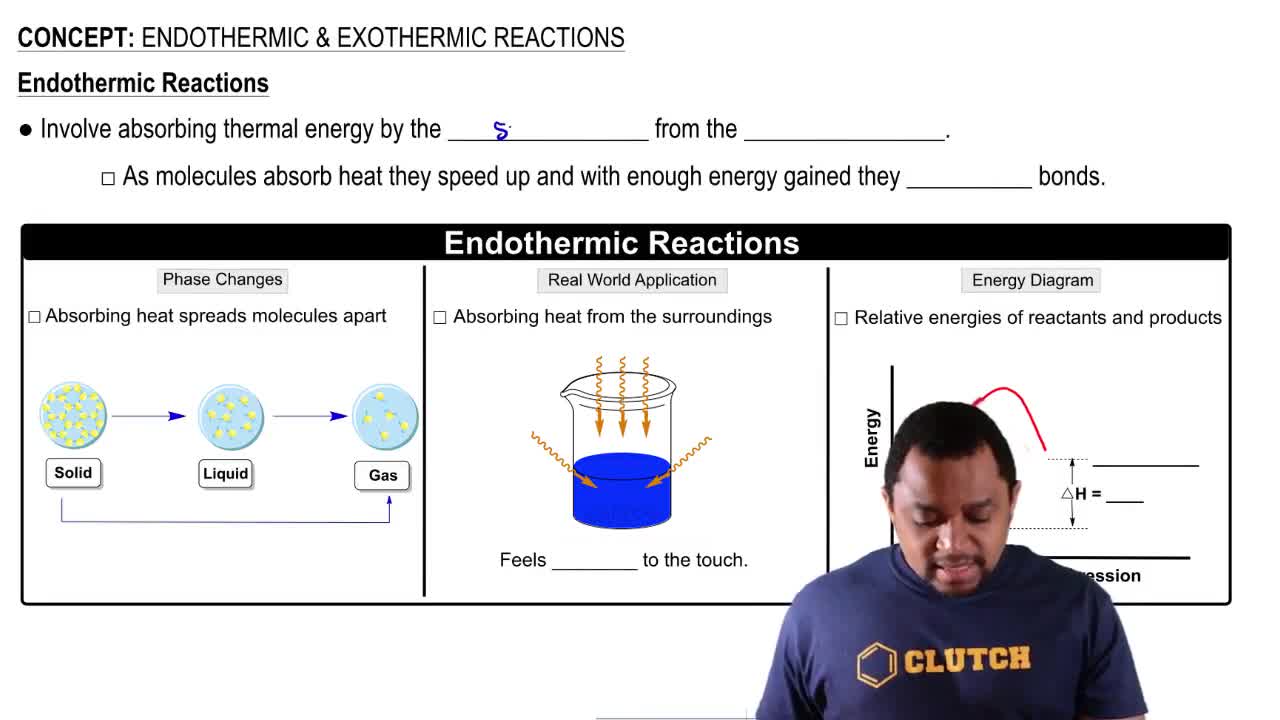Here are the essential concepts you must grasp in order to answer the question correctly.
Equilibrium Constant (Kc)
The equilibrium constant, Kc, quantifies the ratio of the concentrations of products to reactants at equilibrium for a given reaction at a specific temperature. A small Kc value, such as 4.5 * 10^-6, indicates that at equilibrium, the reaction favors the reactants over the products, suggesting that the formation of products is not favored under the given conditions.
Recommended video:
Equilibrium Constant Expressions
Activation Energy (Ea)
Activation energy (Ea) is the minimum energy required for a reaction to occur. In the context of forward and reverse reactions, if Ea for the forward reaction is greater than for the reverse, it implies that the forward reaction is less favorable. This concept is crucial for understanding the kinetics of the reaction and how it relates to the equilibrium position.
Recommended video:
Exothermic vs. Endothermic Reactions
Exothermic reactions release energy, typically in the form of heat, while endothermic reactions absorb energy. The nature of the reaction (exothermic or endothermic) can influence the equilibrium position and the values of Kc. Understanding whether a reaction is exothermic or endothermic helps predict how changes in temperature will affect the equilibrium state.
Recommended video:
Endothermic & Exothermic Reactions
 Verified step by step guidance
Verified step by step guidance


